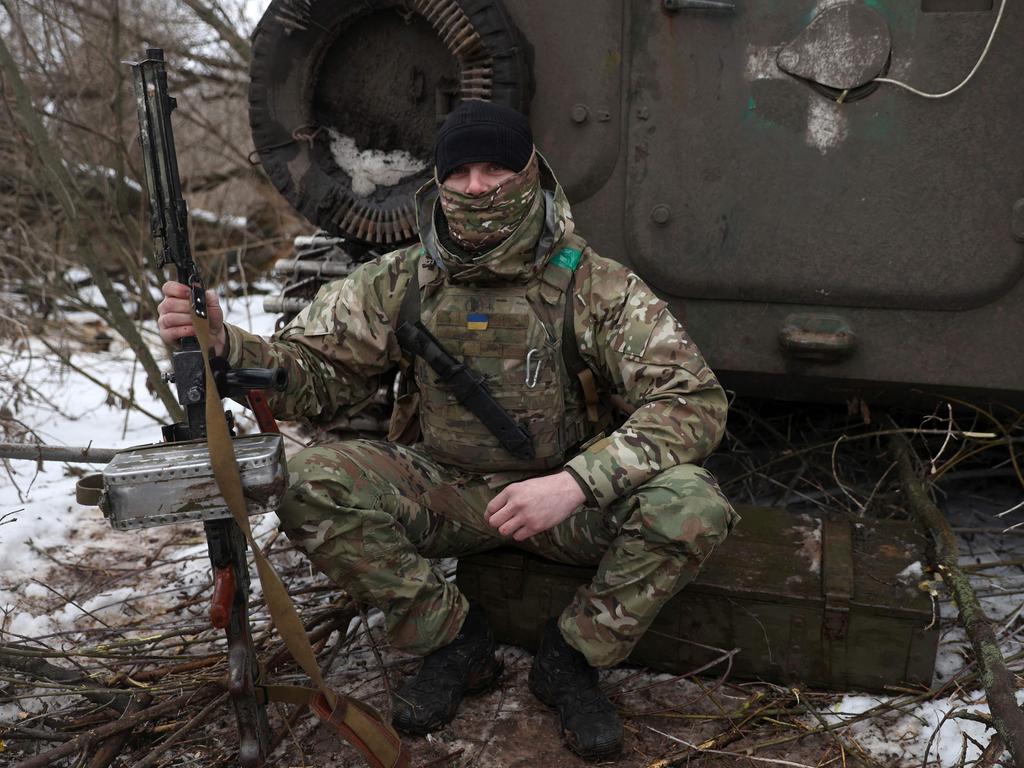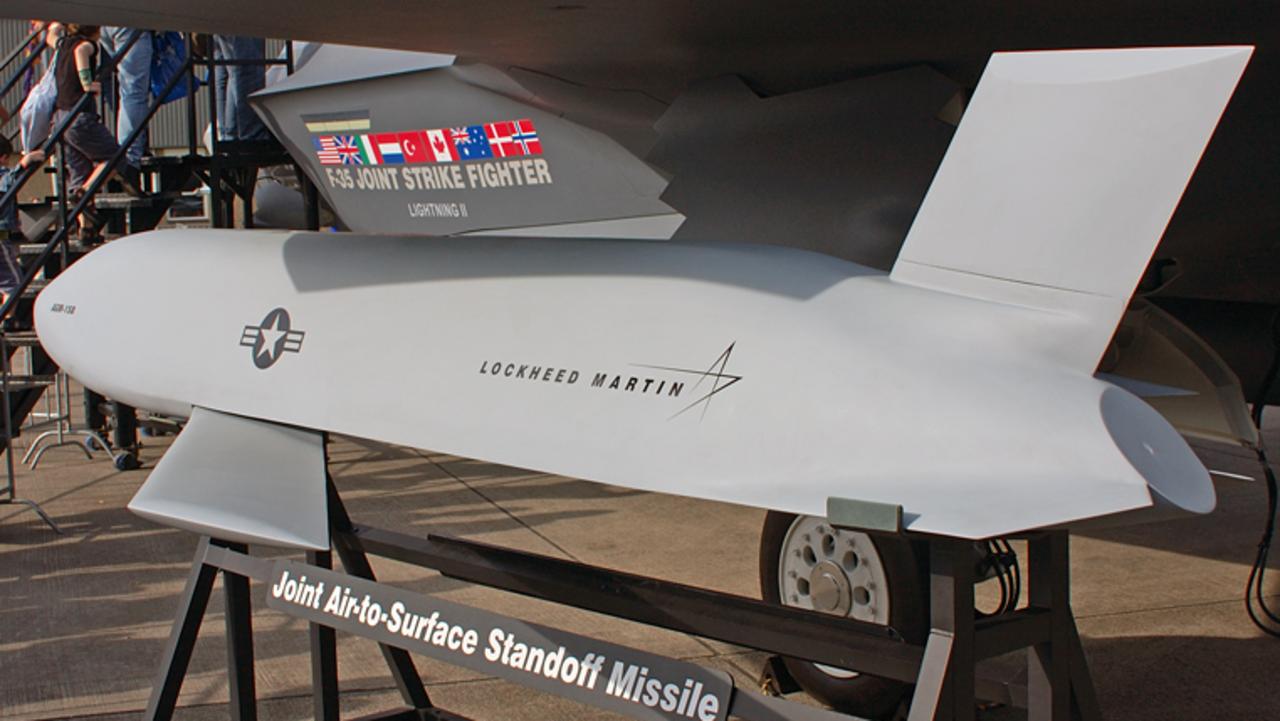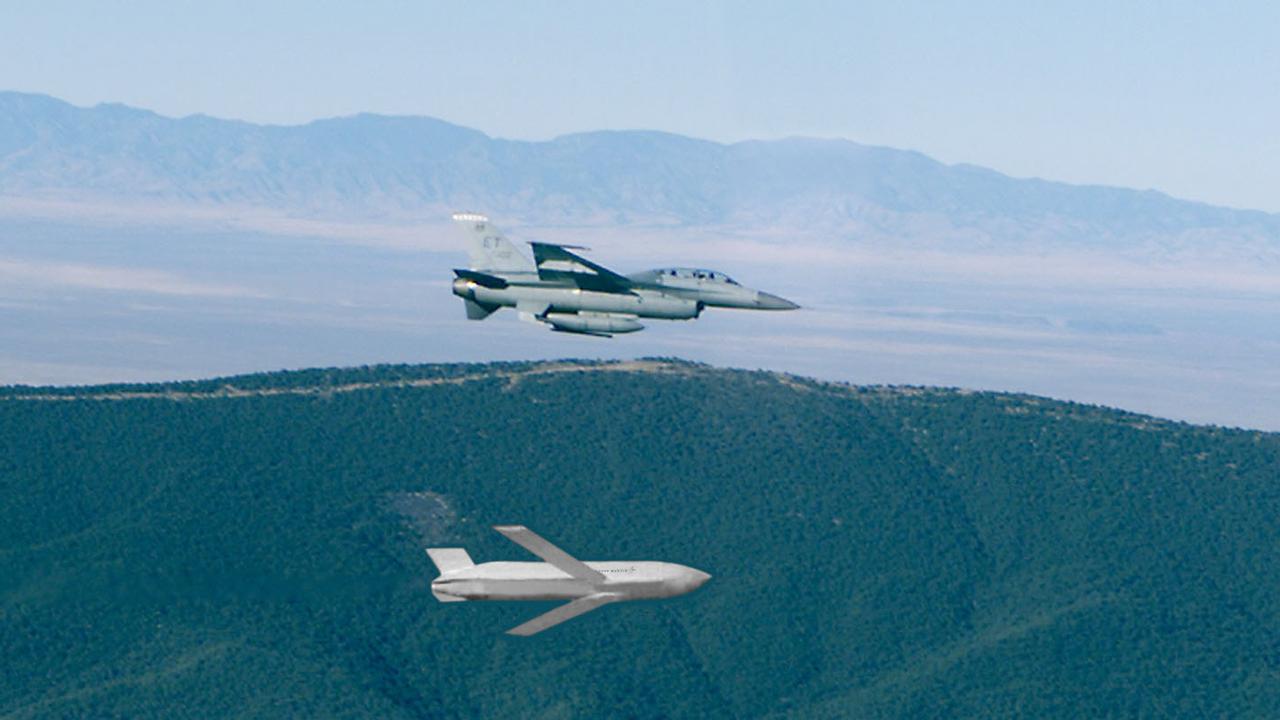US is not prepared for conflict with China over Taiwan
The West is making a big miscalculation when it comes to a conflict with China – and it could be a very costly mistake.
The West risks using up its entire stockpile of long-range precision missiles within a week should war breaking out over Taiwan. So what happens next?
The Centre for Strategic and International Studies (CSIS) has released a report based on a series of simulations analysing the implications of a potential conflict over the East and South China Seas, and Taiwan.
“In every iteration of the war game, the United States expended its inventory of long-range anti-ship missiles [LRASMs] within the first week of the conflict,” CSIS senior vice president Seth Jones says.

It’s a matter of supply and demand.
Against a well-equipped opponent, long-range weapons can give ships and aircraft a degree of survivability. It’s an old lesson currently being relearnt in the battle for Ukraine.
And the side with the deepest stockpiles of effective weapons is the one that wins. It’s another old lesson being relearnt in the battle for Ukraine.
“The current rate of Ukraine’s ammunition expenditure is many times higher than our current rate of production,” NATO Secretary-General Jens Stoltenberg said earlier this month.
Russia’s prolific expenditure of cruise missiles and artillery ammunition has been the centre of much attention. But it’s becoming evident Ukraine is rapidly burning through Western stocks.
Mr Stoltenburg revealed that Kyiv’s defence forces are firing up to 10,000 artillery shells daily.
“If Europe were to fight Russia, some countries would run out of ammunition in days,” an unnamed European diplomat reportedly told Reuters. “It is clear that we are in a race of logistics. Key capabilities like ammunition, fuel and spare parts must reach Ukraine before Russia can seize the initiative on the battlefield. Speed will save lives.”

Now strategic analysts wonder if the old lesson of “amateurs talk strategy, professionals talk logistics” will be relearnt in time to save Taiwan.
Including by Canberra.
“Commendably, the Australian Government had already decided to do something about concerns in this area before the [Ukraine invasion],” Australian Army analyst on secondment to the Australian Strategic Policy Institute (ASPI) Captain William Leben says. “But this is a question not just of expensive missiles but also of explosive ordnance – traditional, ‘dumb’ munitions, like artillery shells, unguided bombs and rockets, and small-arms and medium-calibre ammunition.”
Numbers game
It’s not just a problem for the US and Ukraine. A recent war game with the US and France saw the United Kingdom defenceless.
“In about eight days of exercise, every bit of important ammunition in the British Army’s inventory was expended,” former commanding general of US forces in Europe Ben Hodges noted after the exercise. He concluded that the United States and its allies “absolutely do not have enough of the critical munitions that we need, especially what is called the preferred munitions – the ones that are precise in targeting”.
This should not come as a surprise, Captain Leben says.
“The ammunition consumption rates observed in Ukraine cannot genuinely be described as ‘extraordinary’ because every major conflict forces militaries to relearn this lesson,” he writes in an ASPI analysis. “The salient question here is: Have our assumptions about expected consumption rates and quantities been interrogated against what is being experienced in Europe?”
The CSIS study highlights China’s modern defensive systems, such as those installed on its artificial island fortresses in the South China Sea, will be a significant challenge.
“Long-range anti-ship missiles would be particularly useful because of their ability to strike Chinese naval forces from outside the range of Chinese air defences,” Mr Jones says. “As the war game showed, Chinese defences are likely to be formidable – especially early on in a conflict – thus preventing most aircraft from moving close enough to drop short-range munitions.”
Rationing isn’t an option in a desperate bid to prevent invading forces from crossing the Taiwan Strait and surging into the East and South China Seas.
“In nearly two dozen iterations of a CSIS war game … the United States typically expended more than 5000 long-range missiles in three weeks of conflict,” Mr Jones says.
Some 4000 of these are joint air-to-surface standoff missiles (JASSMs) like the AGM-158. These cost about $A1.9 million each and take about two years to build.
“The US 2023 budget proposes buying only 88 long-range anti-ship missiles,” the CSIS report states.
Efficiency the enemy of resilience
“I think everyone is now sufficiently worried,’” an unnamed NATO official told Foreign Policy. “The relevance of stockpiling is back.”
The Cold War era practice of maintaining large strategic reserves of rare earths, critical materials and even manufacturing equipment was abandoned after the collapse of the Soviet Union.
Under ideal circumstances, it takes two years to build a JASSM. It’s a similar story for Patriot missiles and Tomahawk cruise missiles. And the lag time to increase the output of their factories is also likely to be up to two years.
Any conflict between superpowers would inevitably trigger a global shortage of semiconductors. That’s on top of numerous breaks in critical supply chains for materials such as titanium, aluminium and rare earth minerals. Then there is the limited number of manufacturers of complex components such as missile propulsion systems, temperature-resistant materials and microelectronics.

“The war in Ukraine is a stark reminder that any protracted conflict today is likely to be an industrial war,” Mr Jones says. “Industrial wars require a defence industry capable of manufacturing enough munitions, weapons systems and matériel to replace depleted stockpiles.”
For Australia, it’s an enormously expensive balancing act.
“We can’t manufacture all the components, let alone finished munitions, our weapons platforms need,” Captain Leben says. “That means we face a constant task of balancing the greatest need against the art of the possible. Where are the greatest risks that existing stockpiles and supply chains will fail us, and which of those risks can be addressed quickly?”
He argues even US stockpiles of small arms ammunition ran short during the Iraq war.
“In a genuine regional or international crisis, therefore, how valid is any assumption that the US or other key allies could stopgap our ‘dumb’ munitions shortfalls? It seems highly unlikely that such overseas sources could be relied upon.”
Economic warfare
“These problems are particularly concerning since the rate at which China has been acquiring high-end weapons systems and equipment is five to six times faster than the United States, according to some US government estimates,” CSIS warns.

But an arms race is itself a risky game.
The Soviet Union destroyed its economy in an effort to keep up with the United States.
And according to Captain Leben, a recent audit of Australia’s two main ammunition manufacturers revealed Canberra paid more than three times as much to maintain the state-owned facilities than it did for the munitions they produced.
“The overheads are enormous,” he says.
And that was before Canberra initiated a 10-year program in 2021 for a Guided Weapons and Explosive Ordnance Enterprise (GWEO) sovereign missile supply capacity.
“In short, the GWEO Enterprise appears to remain some way off producing anything,” Captain Leben says. “Defence is at pains to emphasise that in the first instance increasing stockpiles, from whatever supply chains are available, is the first priority.”
The state of Australia’s ammunition stockpiles is a tightly guarded secret. But if it’s anything like the nation’s fuel reserves, it’s likely insufficient for more than three weeks of anticipated usage.
“This initial priority for increasing stocks, not manufacturing, can creditably be seen as a tacit acknowledgment of how fraught the word ‘sovereign’ is in this area,” Captain Leben says. “Building anything that looks like domestically manufactured guided weapons at a relevant scale is an undeniably complex endeavour, and it is perhaps not surprising progress has been slow.”
What’s the point of spending $120 billion on 12 nuclear-powered submarines if they don’t have enough cruise missiles to be of any use?
Why buy a handful of B-21 Raider stealth bombers at $700 million each if they are doomed to languish in their hangars due to a lack of precision weapons to carry?
Such questions are as relevant for Canberra as they are for Kyiv, London – and Washington.
“None of these challenges have quick or easy solutions. But the clock is ticking,” Mr Jones says. “[We] cannot afford to develop this plan after a war has started. A sense of urgency is critical.
Jamie Seidel is a freelance writer | @JamieSeidel






